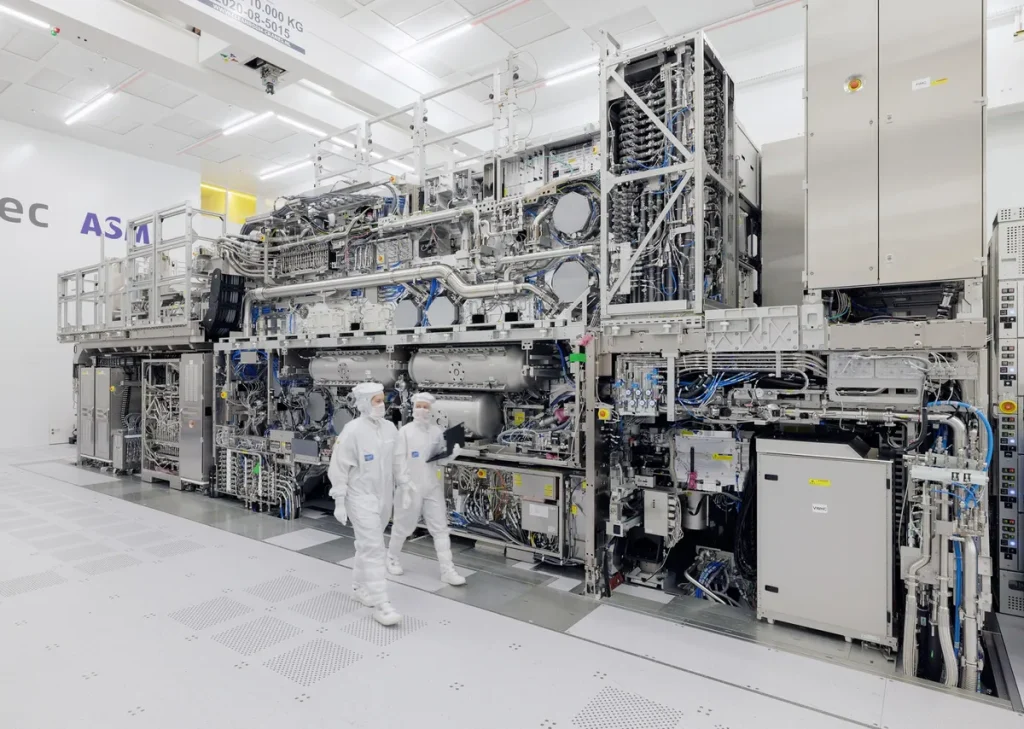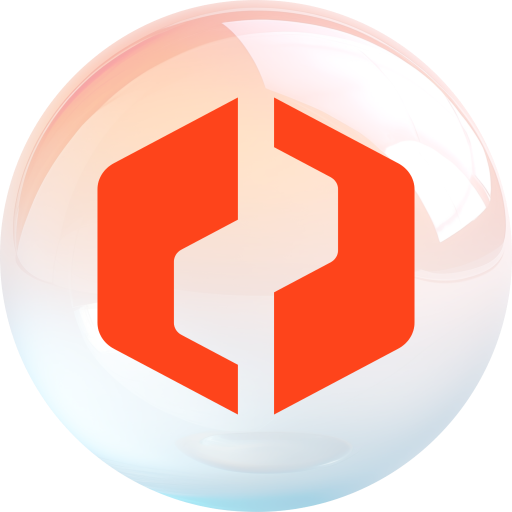Welcome to our weekly news post, a combination of thematic insights from the founders at ExoBrain, and a broader news roundup from our AI platform Exo…
Themes this week

JOEL
This week we look at:
- Why DeepSeek-mania and Nvidia’s record-breaking stock drop reflects political rather than technical matters.
- How AI agents are creating a new economic model.
- ASML’s $380 million chip-making monster machine.
Nvidia market value drops by five Intels in a day
As DeepSeek-mania gripped the world, on Monday, Nvidia suffered the largest single-day loss of market value in history. The headlines blamed the new R1 model (that we covered last week), suggesting its efficiency threatened demand for high-end chips. But this explanation doesn’t add up.
The market reaction seems to misunderstand both R1 and the broader trend in AI development. OpenAI’s o1 already demonstrated similar efficiency gains months ago without triggering market panic. In December, DeepSeek’s V3 showed comparable advances. These developments reflect a well-established trend: researchers are getting better at extracting intelligence from existing hardware.
What’s really changing isn’t the amount of compute needed – it’s how that compute gets used. Modern AI systems spend more processing power thinking through problems plus at other times such as generating high-quality training data. This actually benefits chip makers like Nvidia, as data centres need more processing power to run these activities. o1 and R1 both use much more compute when they’re in use, and if thousands of millions of users use them, then a lot of Nvidia chips are needed. They may not need as many chips for the initial training, but plenty are used to clean data, create datasets with high quality reasoning patterns etc. DeepSeek neglected to include the cost of synthetic data generation in their R1 research paper, and some have suggested that that is where Meta and OpenAI spent a large proportion of their budgets in 2024.
So, what actually spooked the market? It was more likely politics, not technology. The stock drop also coincided with rumours, borne out on Tuesday, that Donald Trump retains a desire to impose tariffs on Taiwanese chip imports. Given that Taiwan’s TSMC manufactures all of Nvidia’s (and the US’s) advanced high-end chips, this poses an existential threat to the US AI industry. Whilst it might encourage chip makers to move facilities onshore, this will take years. Fabs take at least 4 years to construct, and the new TSMC plant in Arizona is ramping up but still needs to send its chips back to Taiwan for the complex packaging process. Tariffs would be a huge act of technological self-harm, grinding US AI progress (and the much-vaunted Stargate project) to a halt, and undoubtedly handing AI victory to China.
Perhaps this broader context was also at play… R1’s release by a Chinese company during worsening international relations highlighted vulnerabilities in America’s technological prowess. While R1’s achievements are impressive, its political implications may have worried investors more than its efficiency gains.
Many analysts also saw the sell-off as an overreaction. Nvidia’s role extends far beyond AI model training. Their chips power everything from robots to industrial simulations and gaming systems and demand remains strong across these sectors.
Takeaways: Don’t mistake political risk for technical disruption. The real threat to Nvidia isn’t more efficient AI models – it’s the fragility of the global order and thus the semiconductor supply chain.
Welcome to the agent economy
Think of today’s business software as a collection of islands. Each application – from Salesforce to Workday – sits in isolation, connected by basic bridges called APIs. These bridges only carry simple messages: “send this data” or “do this task.” But AI agents are changing this landscape. Instead of rigid interfaces, imagine intelligent assistants that can understand complex requests, make decisions, and work together to get things done. This creates an agent-to-agent (A2A) economy, where software systems communicate through AI horizontal and vertical intermediaries. Just as cloud computing created the SaaS economy and smartphones sparked the app economy, AI is creating a new economic ecosystem.
Consider what happens when a new employee joins a company. Currently, HR teams can spend hours manually entering data into different systems, setting up accounts, and coordinating with IT. In an A2A system, one AI agent receives the onboarding request and orchestrates the entire process – working with other agents to create accounts in Workday, set up email in Microsoft 365, configure access in ServiceNow, and add documents to OneDrive. Oracle launched a suite of AI agents for manufacturing and supply chain management at its CloudWorld event in Austin this week, seeing yet another vendor move further into the agent-to-business (A2B) market.
Agents aren’t just confined to the enterprise. Picture your daily tasks being handled by your own AI assistant. Instead of you juggling multiple apps and websites, your personal agent coordinates with business AI systems behind the scenes – agent-to-consumer (A2C) interaction. Take booking a holiday… today, you’d spend hours comparing flights on different websites, checking hotel reviews, and coordinating dates. In the A2C model, you simply tell your AI assistant your preferences and your agent then negotiates with airline agents, hotel booking agents, and tour operators to create personalised options.
Think about an AI agent booking your holiday or negotiating with a new supplier. It needs to coordinate multiple agreements and payments. ‘Smart contracts’ could automate these transactions, holding funds until services are confirmed and releasing payments automatically when conditions are met. The blockchain provides an unchangeable record of every interaction, letting you track exactly what your agent did on your behalf. This could be the real-world application blockchain and web3 have been waiting for. While cryptocurrencies and NFTs grabbed headlines, the real value might be in providing the trust and payment layer for the emerging agent economy.
Takeaways: We’re seeing a move from isolated software systems to interconnected AI agents, creating a new economic model. Unlike cloud or mobile, agents are poised to transform both software spending and labour costs – tapping into budgets that are 30x larger than current software spend. The numbers suggest why major tech companies are investing heavily in this space.
ASML builds giants

This is a High NA EUV lithography machine, built by the Dutch company ASML. It’s the most complex machine on earth with over 700,000 parts, it weighs as much as two Airbus A320s, and costs a cool $380 million. ASML is the sole global supplier of these machines that are critical to the manufacture of AI capable chips such as Nvidia’s Hopper and Blackwell GPUs.
This week ASML reported revenues of $9.7 billion, up 29% year-on-year, driven largely by AI-fuelled demand from chipmakers like Intel, TSMC, and Samsung. However, geopolitical tensions loom over its future, with increasing pressure from the US government to further restrict ASML’s sales to China. The Dutch government has already barred ASML from selling its most advanced EUV machines, but renewed export controls under the Trump administration could tighten restrictions even further.

EXO
Weekly news roundup
This week’s news is dominated by DeepSeek-related developments and their impact on the AI industry, alongside significant infrastructure investments and research breakthroughs in AI model development.
AI business news
- OpenAI starts the release of its o3 mini AI model for ChatGPT, and it’s got a nice speed boost over o1 (Shows that the reasoning model race and trajectory is speeding up)
- Inside Microsoft’s quick embrace of DeepSeek (Reveals how major tech companies are rapidly adapting to new AI competitors.)
- Has Europe’s great hope for AI missed its moment? (Important analysis of Europe’s position in the global AI race.)
- Meta crushes Wall Street’s profit targets as Zuckerberg dismisses DeepSeek threat (Indicates the financial impact of AI on tech giants.)
- Google quietly announces its next flagship AI model (Signals intensifying competition in the AI model space.)
AI governance news
- White House AI Czar Sacks says ‘evidence’ DeepSeek leaned on OpenAI’s models (Highlights growing concerns about AI intellectual property.)
- Sensitive DeepSeek database exposed to the public, cybersecurity firm Wiz reveals (Underscores the importance of AI security practices.)
- Google report finds state-based hackers are using AI for research and content generation (Reveals emerging security threats in AI deployment.)
- DeepSeek’s popular AI app is explicitly sending US data to China (Raises critical data privacy and national security concerns.)
- Italy’s privacy regulator goes after DeepSeek (Shows increasing regulatory scrutiny of AI companies.)
AI research news
- SFT memorizes, RL generalizes: A comparative study of foundation model post-training (Important insights for AI model training strategies.)
- Critique fine-tuning: Learning to critique is more effective than learning to imitate (Advances our understanding of AI model improvement techniques.)
- Chain-of-retrieval augmented generation (Presents new approaches to improving AI information retrieval.)
- Qwen2.5-1M technical report (Details more Chinese advances in LLM architecture.)
- Early external safety testing of OpenAI’s o3-mini: Insights from the pre-deployment evaluation (Crucial information about AI safety testing protocols.)
AI hardware news
- OpenAI’s Altman urges US to support AI investment after DeepSeek (Shows the push for increased government support in AI development.)
- Stargate will use solar and batteries to power $100B AI venture (Demonstrates the intersection of AI and sustainable energy.)
- Microsoft AI revenue hits $13B annually, but cloud growth disappoints investors (Provides key metrics for AI market performance.)
- Data center operator DataBank nets $250M equity investment (Shows continued investment in AI infrastructure.)
- Exploding datacenter market leads to $73B in M&A activity (Indicates massive growth in AI computing infrastructure.)




